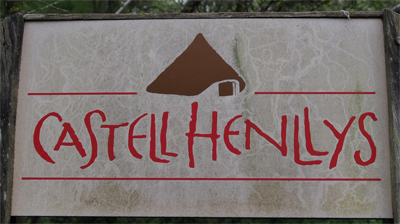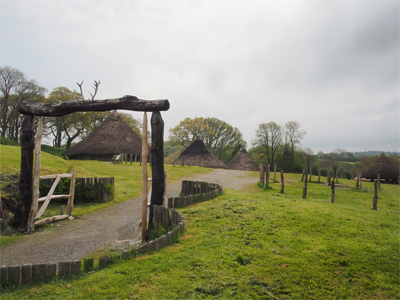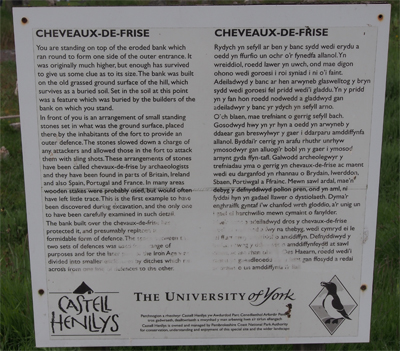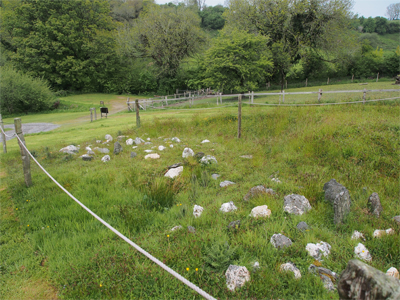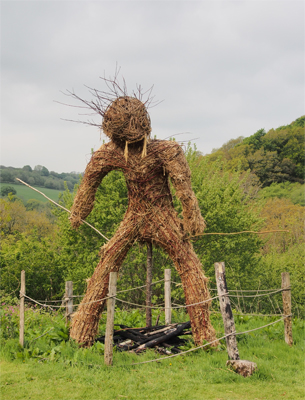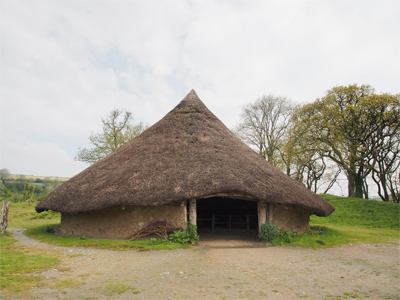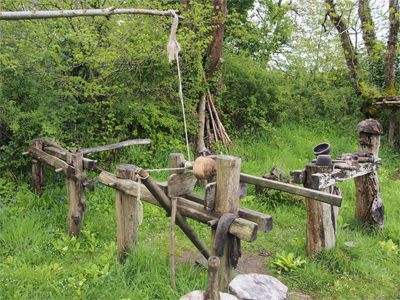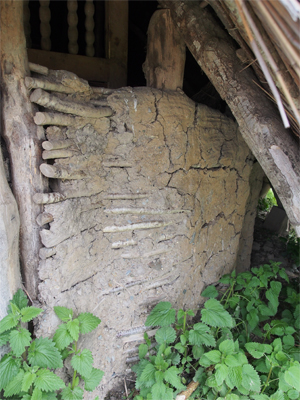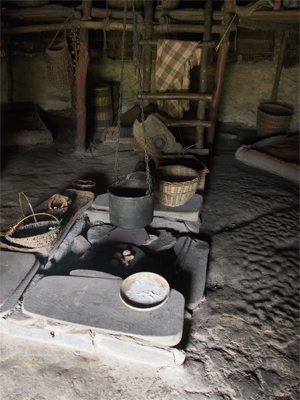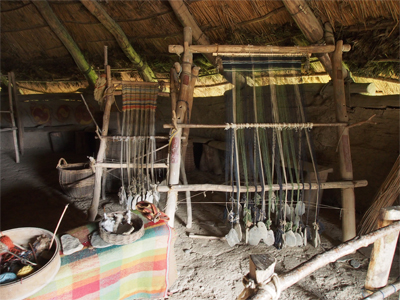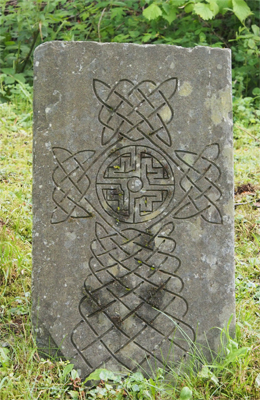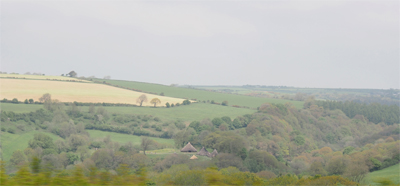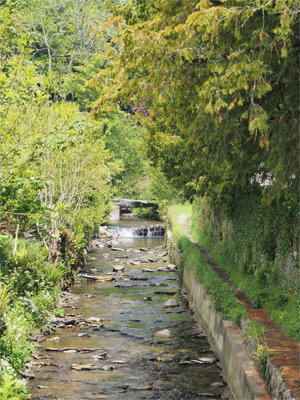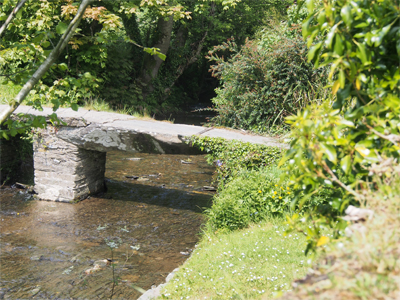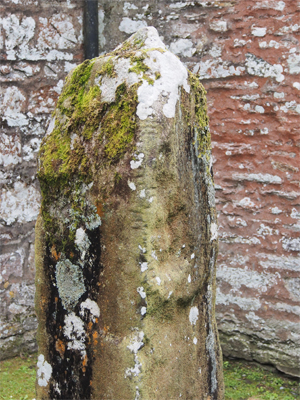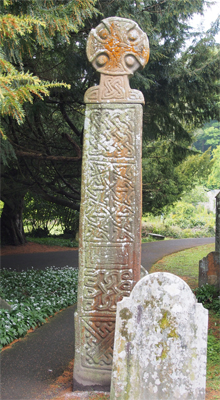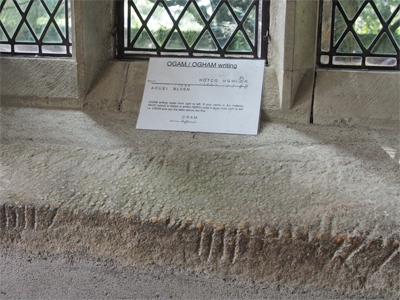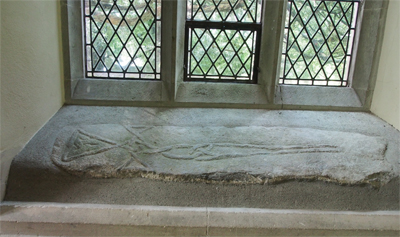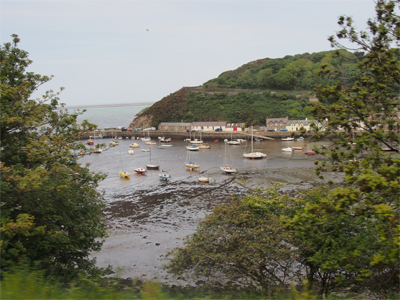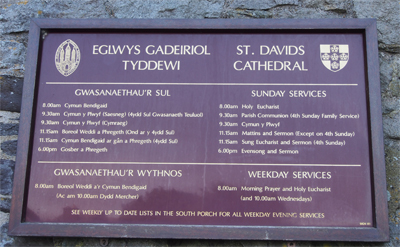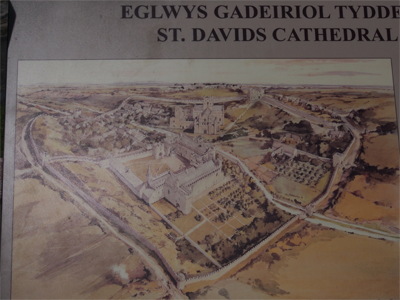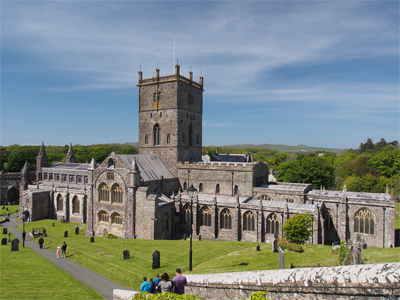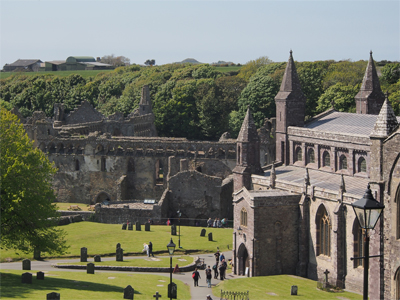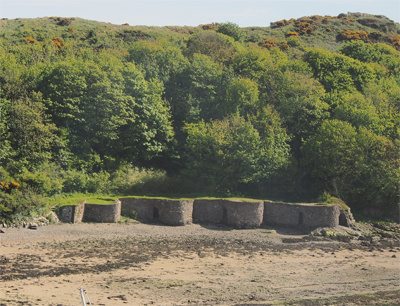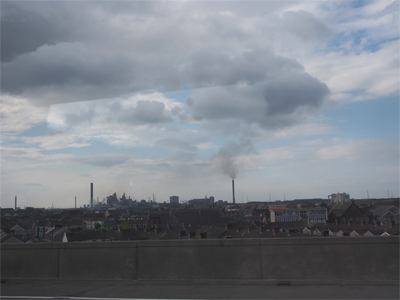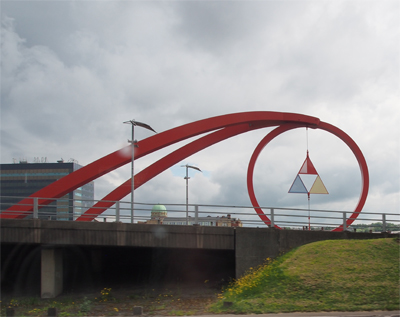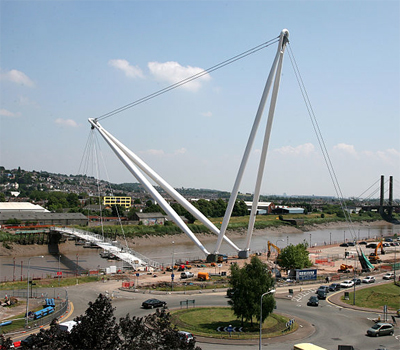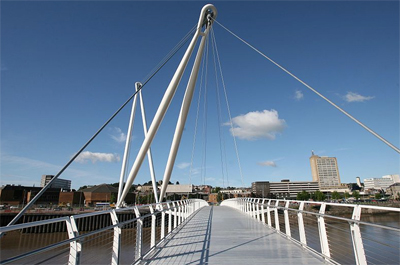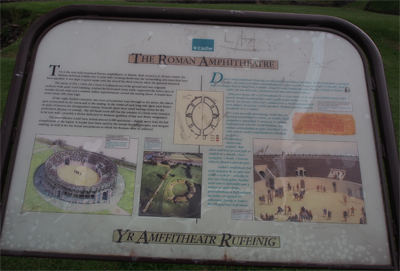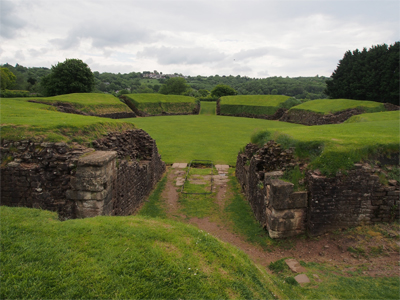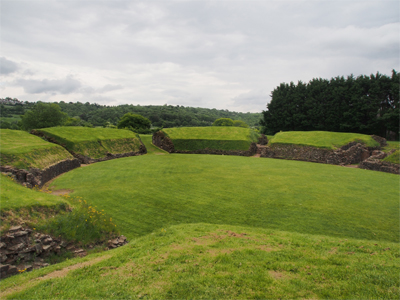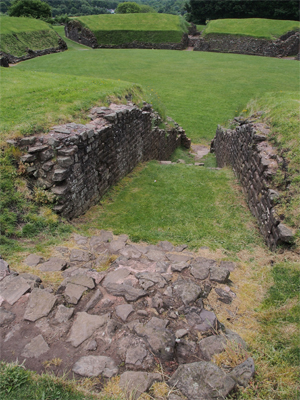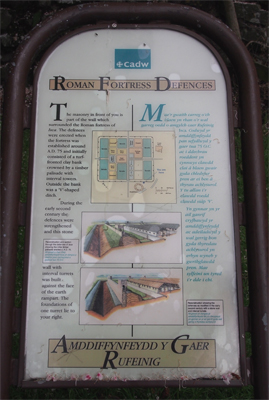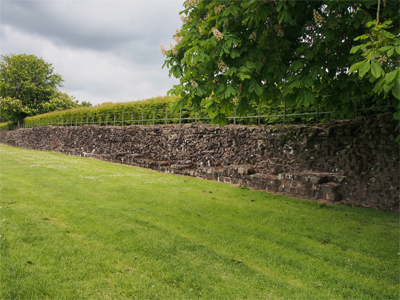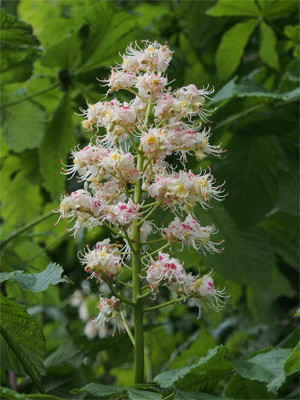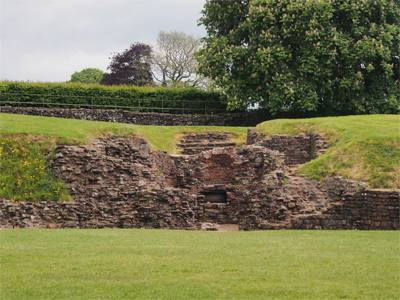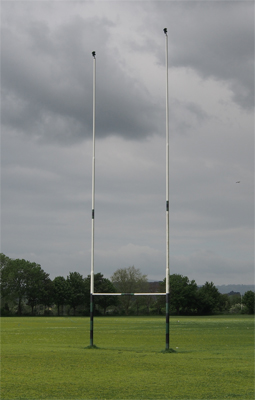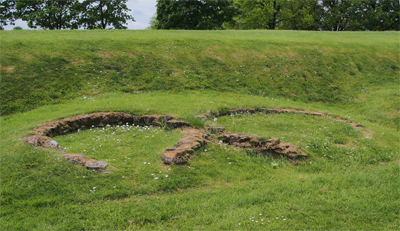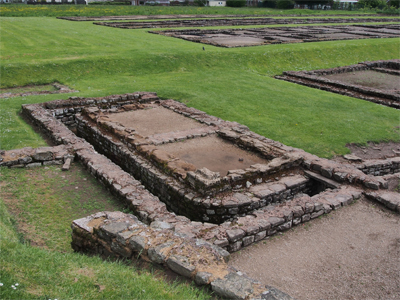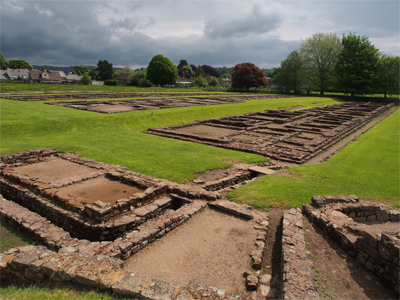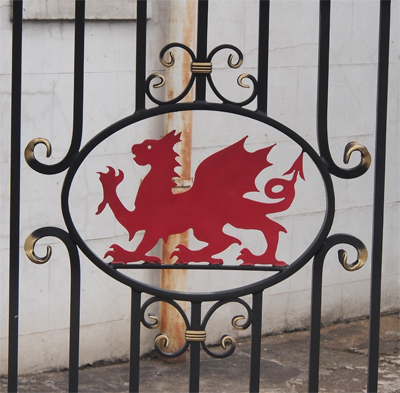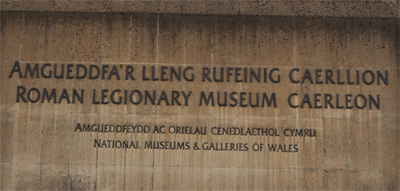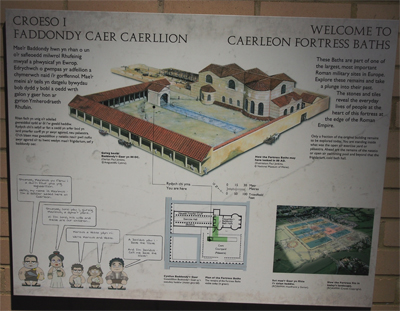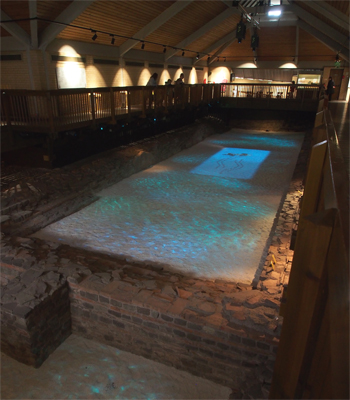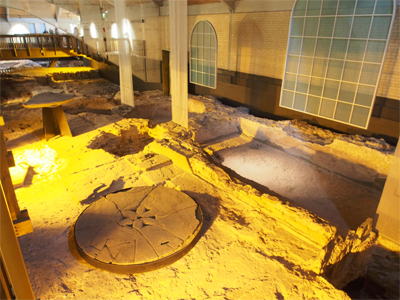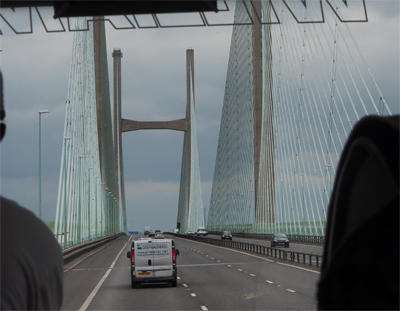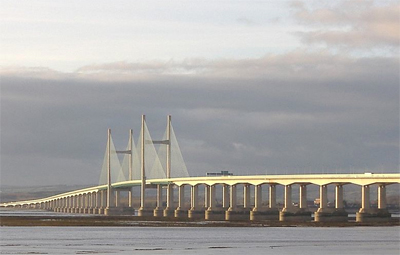Wed., 5/29/13 - Carmarthen
Our first stop today was at Castell Henllys, a 600 BC Iron Age hill fort. There are perhaps 100 of these remaining mounds across south and west Britain. They are identified by significant earthworks and ditches formed by the drip lines of the original round huts and depressions left by postholes. Maybe ten of these sites have had some archeological excavation over the last 20 years. Castell Henllys is still being studied and some of the round thatched huts have been reconstructed using "educated guesswork" as to their design. We entered a living/sleeping hut, a work hut with looms and utensils and traps, and looked into a storage cache on stilts. There is a guard station at the entry gate and posts and stones supporting the earthen bank. Stones containing iron were scattered at the entry to slow down cavalry or attacks by foot – a cheveaux-de-frise. A straw and twig effigy stood at the entry and was believed to be a human or animal sacrifice to be burned. What is known of these forts or living communities of around 150 people has been learned from Latin writing when the Romans appeared in 40 AD. This was an interesting site.
|
Entry gate
|
|
Cheveaux-de-Frise - stones containing iron to slow down attackers
|
Straw effigy
|
Round house |
A primitive lathe |
Wall construction
|
Inside the workhouse
|
Interior of chief's house - Died wool and weaving with stones used as yarn stretchers |
Celtic cross
|
Looking back at Castell Henllys from the bus |
Our next stop was at the church of St. Brynach in Nevern. The churchyard has 700 year old yew trees and the standing Nevern Great Cross, which was carved about 1000 AD.
|
|
Stream with single slab bridge of blue stone
|
Blue stone bridge |
Vitalianus Stone with Ogham markings
|
Nevern Cross -
A 10th century Celtic cross
|
Example of Ogham writing on the Maglocunus Stone
|
Braided cross - early 10th century |
Fishergate Bay at low tide
|
Our next stop was in St. David to see the cathedral built where St. David, the patron saint of the Welsh, had a monastic cell. It is a huge early 12th c. building added to over the centuries. The flying buttresses supporting the outer walls are inside the building. Unfortunately, the BBC radio was recording the Evensong service inside the cathedral so we could not see any of the significant things inside - the sarcophagus with St. David's relics, and alabaster tomb of the only woman buried there, and the beautiful architecture. Instead we wandered into the ruins of the 14th c. bishop's palace and around the outside of the huge cathedral.
|
|
|
St. David's Cathedral
|
Bishop's Palace |
After dinner we were entertained by Llinos Daniel, a very talented harpist, singer and actress. She played a concert harp and showed me how it all works. She sang and played several Welsh folk songs including the Tale of Gelert, the faithful dog wrongly accused. She read some lines from Dylan Thomas' "Under Milk Wood.” It was a wonderful evening of Welsh music.
|
Old kilns
|
Thurs., 5/30/13 - Carmarthen to London
|
|
Steel mills at Swansea |
Newport Wave steel sculpture by Peter Fink
|
Newport City footbridge over the River Usk
|
Newport City footbridge |
We drove north from Newport to Caerleon and the Roman Fortress Museum there. The amphitheater was built into the ground and we could imagine what the stone foundation and timber upper seats would have looked like. We walked down to the legion barracks. It was also just stones marking where the walls were and grass filled it all. The cook rooms, ovens, and latrine were framed out. Next we browsed through the museum. Many remnants of Roman pots, glass, utensils, coins, etc. were found here and are on display. Last we walked to the covered structure where the Roman baths and palestra were excavated.
|
|
Roman amphitheater at Caerleon
|
Roman amphitheater at Caerleon |
Roman amphitheater at Caerleon
|
|
Roman wall at Caerleon |
Horse chestnut in bloom
|
Roman amphitheater at Caerleon |
Rugby goal
|
Barracks area - ovens |
Barracks area - latrines
|
Barracks area |
Wrought iron and the Welsh dragon
|
|
|
Roman baths
|
Roman baths |
Sadly, we left Wales by crossing the three-mile long Second Severn Crossing Bridge into England. It is a wonderful cable-stayed bridge designed with the cables meant to resemble ship sails. We have traveled 851 miles from North Wales to South Wales and loved the country and the people and the music.
|
|
Second Severn Crossing Bridge - from the bus
|
Second Severn Crossing Bridge (internet photo) |
Old Severn Bridge (internet photo) |
|
Fri., 5/31/13 - London to Houston to Estes Park
Our flights on United and the processing through customs were uneventful. We drove home, arriving at 8:30 PM.
As usual, it is wonderful to be home in lovely Estes Park but this was an interesting and educational three weeks in Ireland, Scotland, and Wales. We are ready to go back again sometime.
